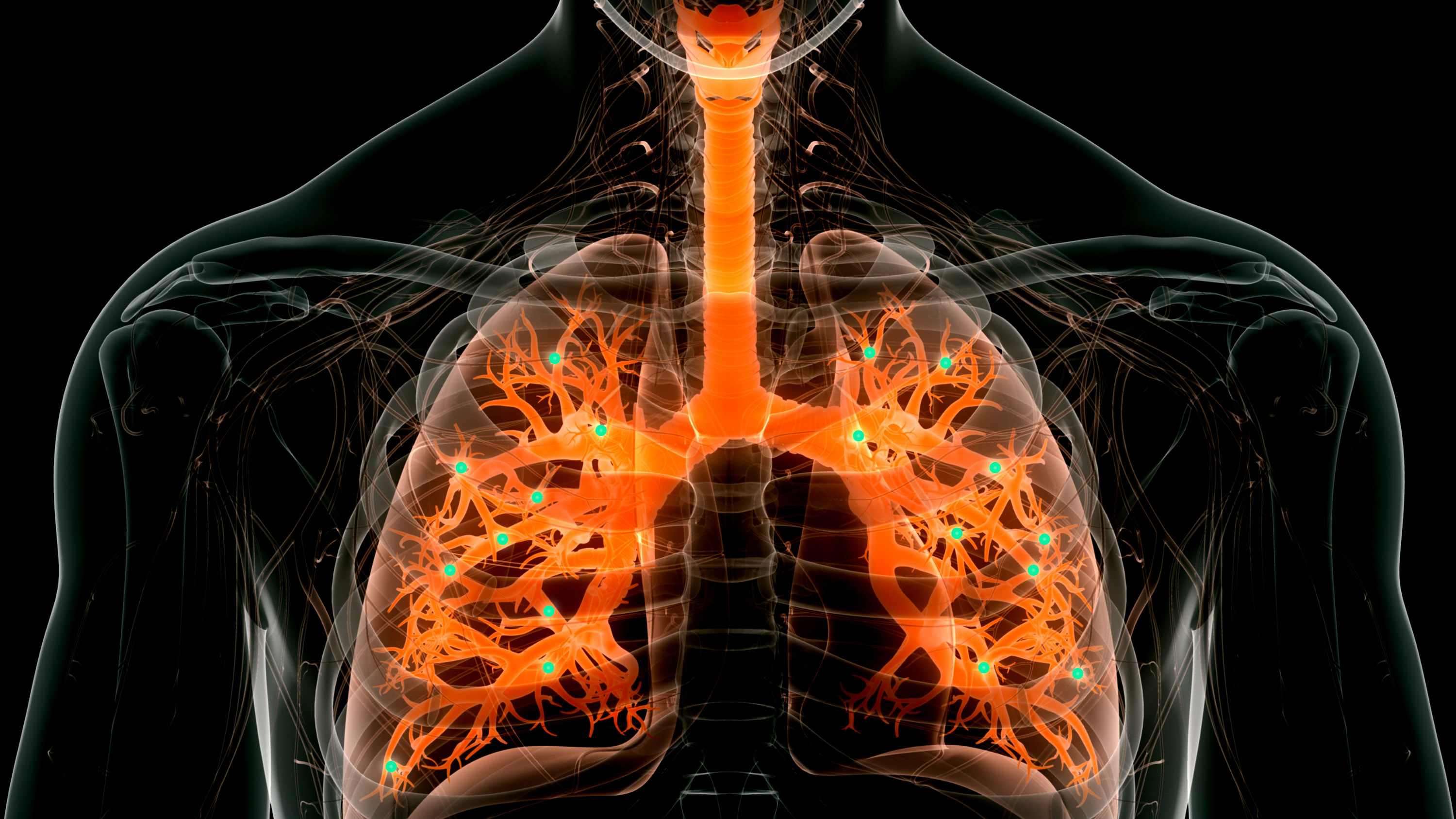Nanoparticles target lung disease
The fatty particles could deliver CRISPR gene-editing proteins directly to the lungs, where they can delete the errors that cause illness.

A nanoparticle developed by MIT chemical engineer Daniel Anderson and colleagues can deliver messenger RNA encoding CRISPR gene-editing proteins to the lungs of mice. With further development, the researchers say, such particles could offer an inhalable treatment for cystic fibrosis and other lung diseases, snipping out and replacing the faulty genes that cause them.
The particles that surround the mRNA consist of two parts: a positively charged head and a long lipid tail. The head structure helps the particles interact with the negatively charged mRNA, while the tail helps them pass through the cell membrane.
After one dose of the particles was administered to the lab mice, the mRNA made it into about 40% of the epithelial cells, which form most of the lung lining. Three doses brought the level up to 60%. For the two specific types of epithelial cells that are the most important targets for treating lung disease, the level was about 15%.
“This means that the cells we were able to edit are really the cells of interest for lung disease,” says Bowen Li, a former MIT postdoc and now an assistant professor at the University of Toronto, one of the paper’s lead authors. “This lipid can enable us to deliver mRNA to the lung much more efficiently than any other delivery system that has been reported so far.”
The new particles break down quickly, allowing them to be cleared from the lung within a few days and reducing the risk of inflammation. They could also be delivered multiple times to the same patient without triggering an immune response.
The researchers are now working on making their nanoparticles more stable, so they could be aerosolized and inhaled. They also plan further mouse studies to test whether the particles can deliver mRNA to correct the genetic mutations involved in cystic fibrosis and other lung diseases.
Keep Reading
Most Popular
Large language models can do jaw-dropping things. But nobody knows exactly why.
And that's a problem. Figuring it out is one of the biggest scientific puzzles of our time and a crucial step towards controlling more powerful future models.
How scientists traced a mysterious covid case back to six toilets
When wastewater surveillance turns into a hunt for a single infected individual, the ethics get tricky.
The problem with plug-in hybrids? Their drivers.
Plug-in hybrids are often sold as a transition to EVs, but new data from Europe shows we’re still underestimating the emissions they produce.
Stay connected
Get the latest updates from
MIT Technology Review
Discover special offers, top stories, upcoming events, and more.